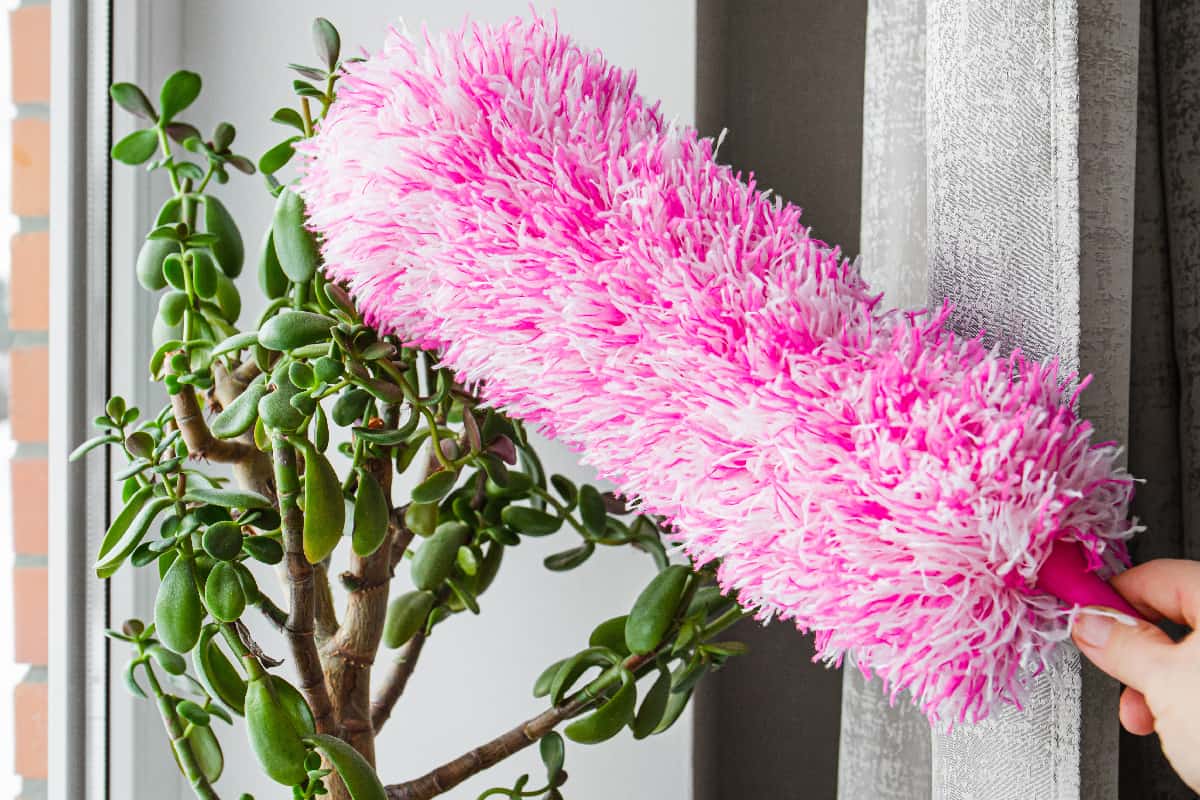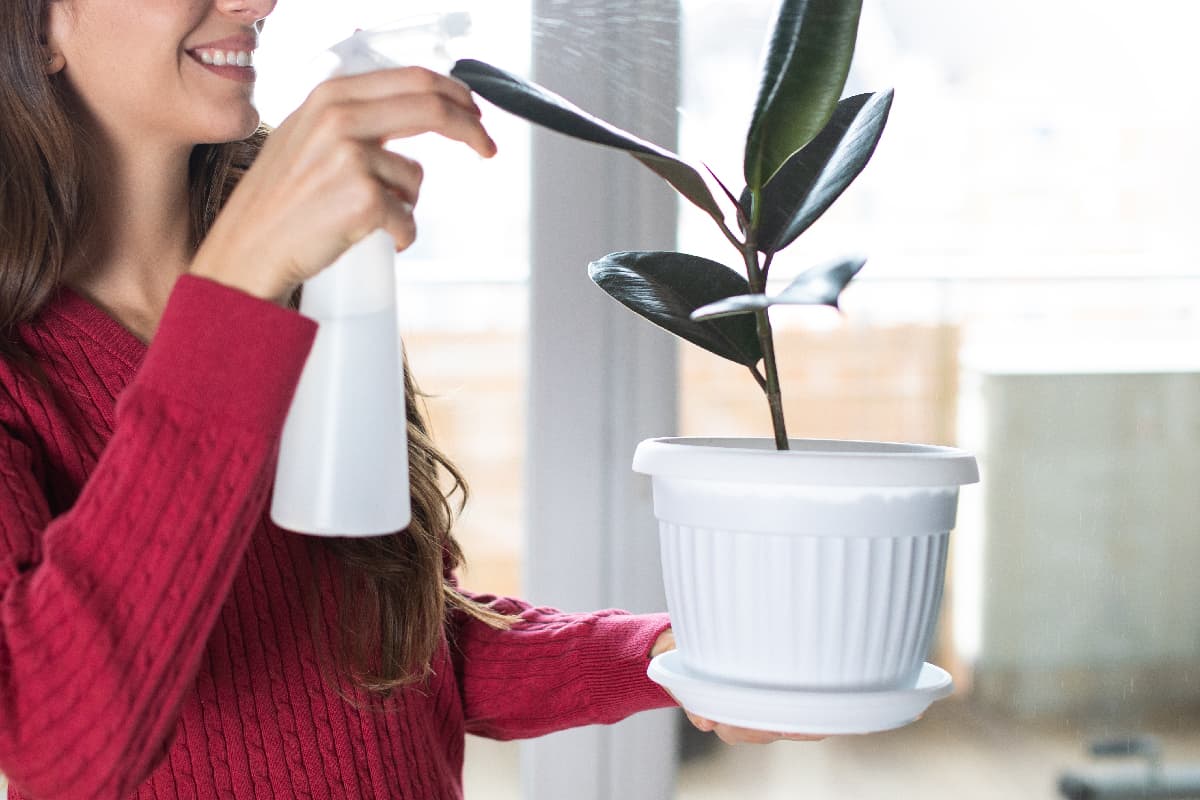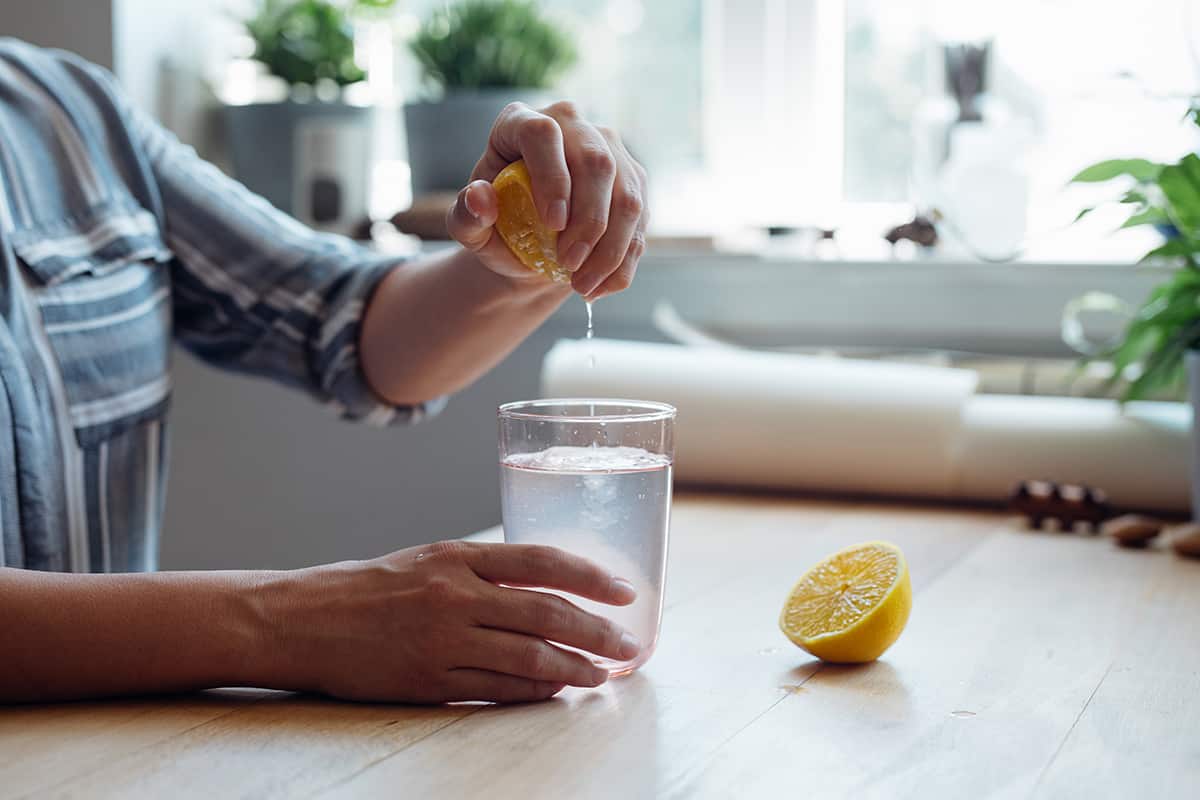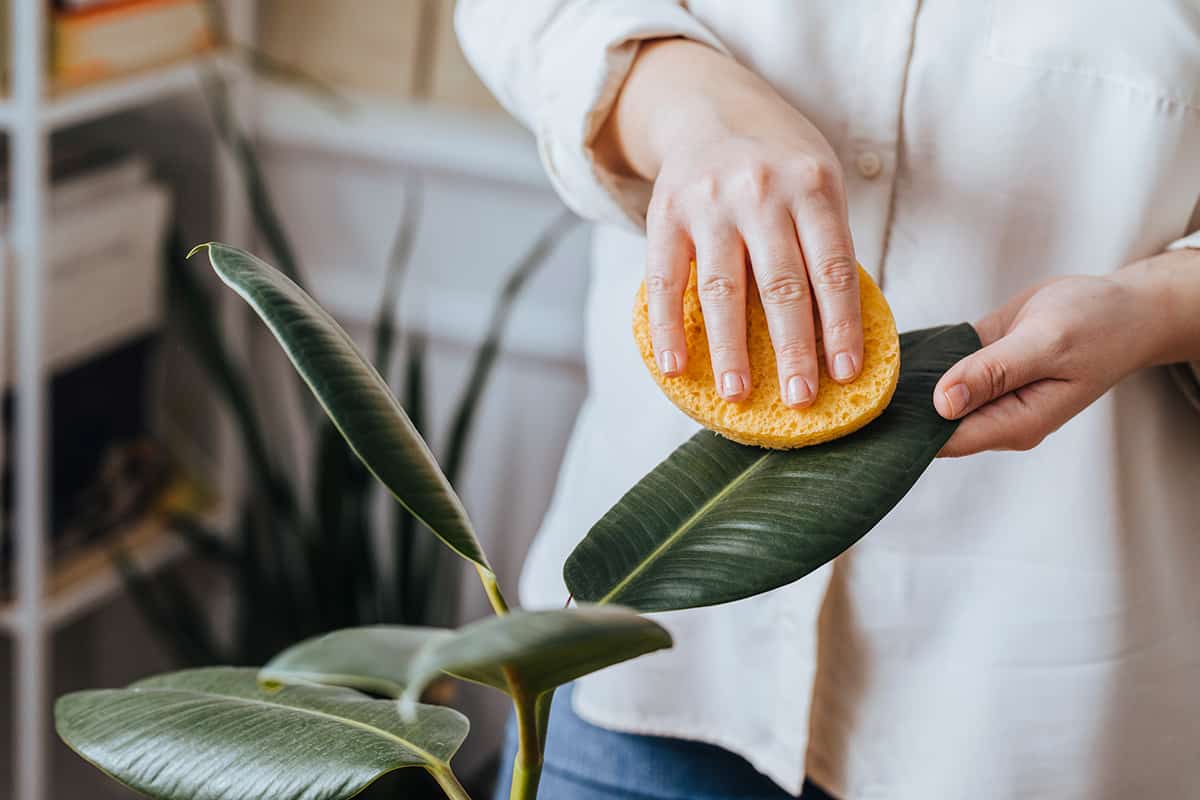Plants not only add a splash of nature's charm to our homes but also require regular maintenance to stay vibrant. To assist you in keeping your foliage fresh and sparkling, we've gathered essential tips and strategies.
The best methods and products for cleaning plant leaves depend on the plant type, leaf characteristics, and the dirt involved. To effectively remove grime, consider using items you already have at home:
- Use readily available tools such as a self-made soap solution and water to clean the leaves.
- Alternative solutions such as vinegar or lemon/lime
- If you don't trust creating your self-made concoction, use a commercial plant leaf cleaner solution instead.
Now that you know all the best methods for cleaning plant leaves keep reading this article as we will go into more detail about the best cleaner for plants and how to use them.
![Florist with red beard spraying plants with water, Best Leaf Cleaner For Plants [And How To Use]](https://gardentabs.com/wp-content/uploads/2022/08/Best-Leaf-Cleaner-For-Plants-And-How-To-Use-e1661340935641.png)
Multiple Ways of Cleaning Plant Leaves With Readily Available Tools
Cleaning leaves will remove dust buildup, which is important for aesthetics as well as for your plants' health: dusty leaves can't carry out photosynthesis as well as clean ones.
Without further ado, here are multiple ways to clean plant leaves.
Using A Spray Nozzle or Hose

First, you would need to move your plants near a water source to hose them down with water easily.
Ensure that you are using low water pressure and that the water is lukewarm. While spraying down the leaves, provide enough support so that the water pressure does not harm your plant in the process.
Using A Soft Duster

Cleaning indoor plants from dust is essential for their health and appearance. This method, while not removing all dust, eases future cleaning efforts.
Gently brush the foliage to avoid damage, and afterwards, vigorously shake the duster outside to remove trapped dust. This approach ensures plants stay healthier and makes thorough cleanings more manageable.
Submerging the Plant in a Bucket of Water
There are instances wherein dunking your plant in a bucket of water may save you time.
This method is especially good for small plants with many leaves. Make sure that you are using a bucket of lukewarm water before doing this practice.
Here are the steps for this process:
- Lightly water the soil so that it stays intact throughout.
- Grab the pot with your hand and gently turn the pot upside down. Remember to clamp the soil with your other hand so that it does not fall out of the pot.
- Submerge the plant in a bucket of lukewarm water.
- Raise the plant and let it drip before returning it to its normal position.
Using A Spray Bottle

Many indoor plants are sensitive to high water pressure and can be effectively cleaned with a spray bottle. This method allows for gentle dust removal without the risk associated with using a hose.
You can either use water or a soap solution to guarantee that you'll easily remove grime from the leaves of your plants.
Here are the steps in misting your plants:
- Grab the spray bottle.
- Fill it up with water or with a soap solution.
- Gently mist the leaves with water.
- If you're using a soap solution, give the plants another rinse using lukewarm water. Ideally, you would want to use another spray bottle for this step.
- Pat down the leaves with a soft towel.
Alternatively, you can use a plant leaf cleaner solution (commercially available) instead of the soap solution.
How to Make the Soap Solution
In order to make a solution, here are the steps:
- Mix three to four tablespoons of mild dish soap per liter of lukewarm water.
- Mixing all of these inside the spray bottle is easier to avoid the burden of transferring from one container to another.
- If it's not possible to mix them all in the spray bottle, the final step would be to transfer the solution to the spray bottle.
- You can now gently mist your plants with the soap solution.
Best Commercially Available Plant Leaf Cleaner Solution
Now, if you don't trust yourself with many of the methods listed above or feel like giving your plants extra love and attention, here are a few commercially available plant leaf cleaner solutions for you!
Miracle-Gro Leaf Shine
Miracle-Gro Leaf Shine is an easy-to-use spray that instantly gives glossy life to the leaves of your indoor plants.
This product is particularly beneficial for hard-leaf plants like rubber plants, peace lilies, and palm varieties, where dust accumulation can be a visual and health issue for the plant.
Check out the Miracle-Gro Leaf Shine on Amazon
Bonide Leaf Shine
The Bonide Leaf Shine is a decent plant shine polish that constantly gives your plant leaves a shiny look.
Simply spray on all leaves and wipe them down. You can use this spray monthly or as needed to maintain it.
Check out the Bonide Leaf Shine on Amazon.
Houseplant Leaf Armor
The Houseplant Leaf Armor is a multifaceted leaf cleaner and protector designed to enhance the health and appearance of your indoor plants.
Specifically formulated for plants with foliage like fiddle fig leaf plants, this product aims to provide a natural, glossy sheen, promoting the plant's vitality and freshness.
Check out the Houseplant Leaf Shine Spray on Amazon
Other Alternative Cleaning Solutions
Now, suppose none of these commercially available options are up to your standards or even the classic soap solution method. In that case, there are a few more alternative methods with readily available ingredients.
Using Vinegar or Lime/Lemon Solution to Remove Grime

For this method, you'll need two cups of soft water and one tablespoon of white vinegar.
Soft water is a type of water that contains lower levels of calcium and magnesium; examples are rainwater or distilled water.
Simply mix the water and the vinegar in a bowl and use a cloth to wipe the leaves with the solution.
Alternatively, you can use a tablespoon of lime or lemon with the same amount of water. Lemons or limes would prove helpful as an introductory repellant for your plants as it keeps your pets away.
Similarly, vinegar can also do the same thing for pests and insects, ensuring they won't go near your plants.
Why Should You Clean Your Plant Leaves?

Regular leaf cleaning is essential to prevent dust accumulation on your plants, offering numerous benefits for both indoor and outdoor varieties. Here are several key reasons to maintain clean plants regularly.
Boost Plant Health
Dust-free leaves absorb sunlight more efficiently, vital for photosynthesis and the plant's overall health. Dust buildup can hinder this process, potentially leading to weaker growth or even plant death due to insufficient light.
Reduce Allergy Risks
Dust on indoor plants can aggravate allergies. Keeping your plants clean helps minimize this risk, creating a healthier living space.
Prevent Pest Infestations
Regular cleaning allows you to inspect plants for pests hiding in leaves and stems, enabling early intervention. Maintaining plant health through cleanliness is key to deterring pest infestations.
Remember, healthy plants contribute to a healthier home environment by improving air quality and reducing allergen levels. Regular leaf cleaning is an easy yet effective step in plant care that shouldn't be overlooked.
In Closing
You and your plants would have many benefits if you were to regularly clean and maintain their leaves. In this article, we talked about the methods of cleaning leaves, the best products to use, and other alternatives.
If you found this article helpful, check out some of the other informative articles that we have:



